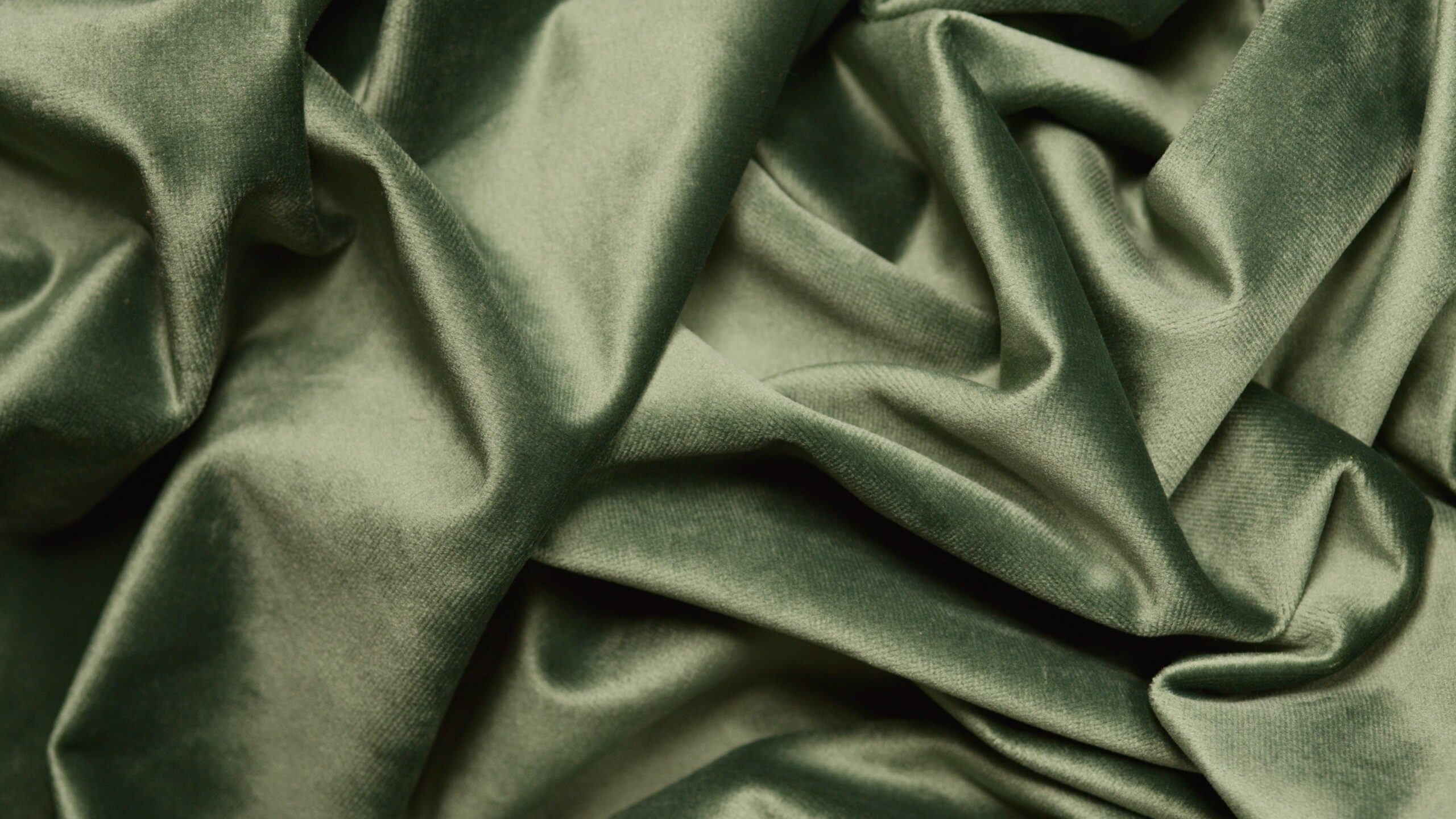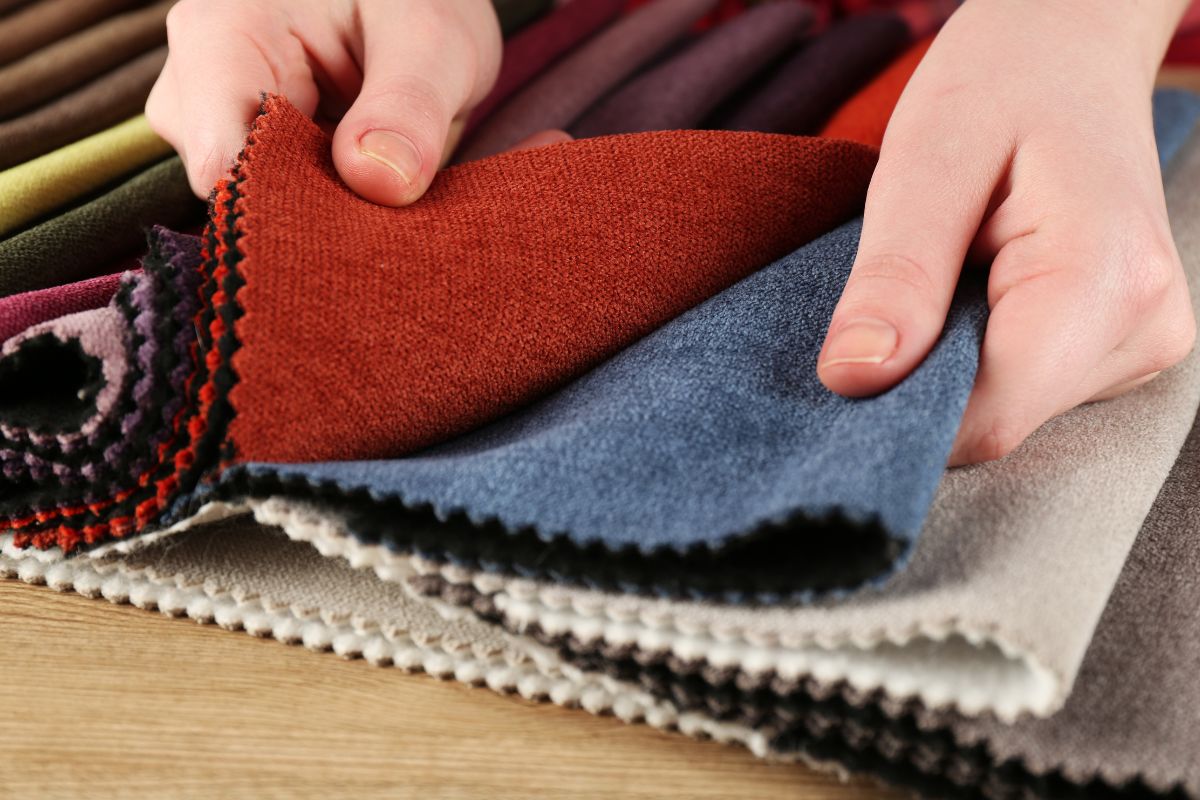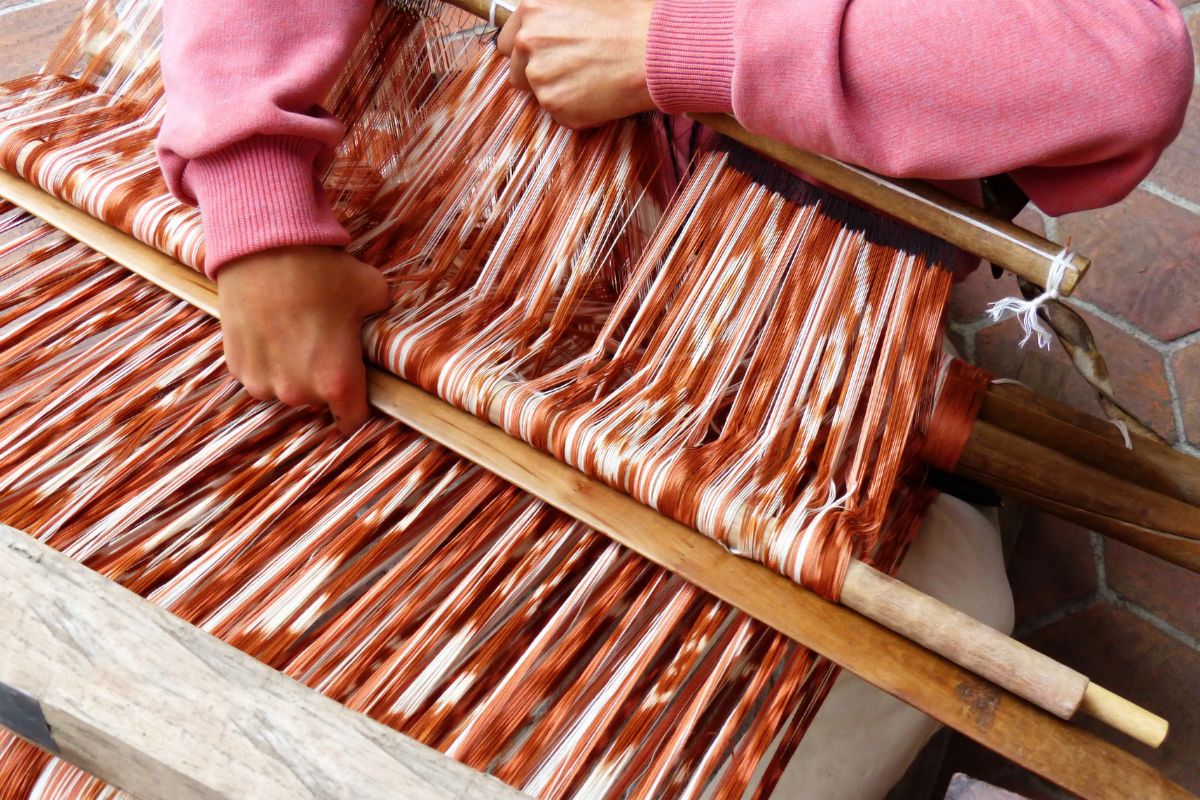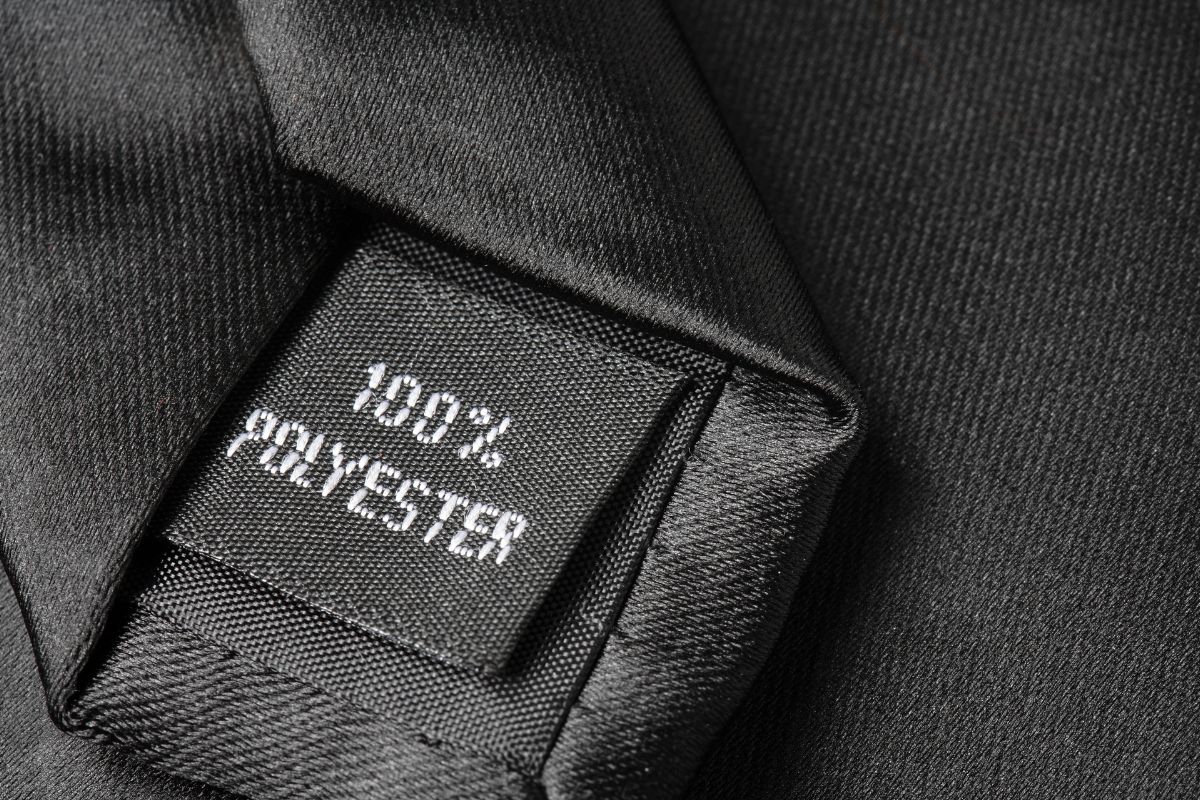When you’re considering the purchase of polyester fabric, one of the first questions you might have is whether it will offer the stretch you need for comfort and fit. Polyester, a synthetic fiber known for its durability and strength, does have the ability to stretch. However, the stretchability of polyester fabric depends greatly on the specific weave or knit and whether it’s blended with other materials that might enhance its elastic properties.
Understanding the performance of polyester in various applications is crucial as its stretch can affect both comfort and the fit of clothing. For example, fabric for athletic wear often incorporates polyester because of its resilience and ability to retain its shape. Yet, if you’re looking for a material with significant give, pure polyester might not always be your best bet. In such cases, manufacturers may combine polyester with more elastic fibers like spandex or elastane to increase the fabric’s overall stretch.
So, while polyester may not inherently be as stretchy as other fabrics, its versatility makes it possible to engineer it for just the right amount of give. Whether you’re looking into polyester for sportswear, casual attire, or even home textiles, it’s the fabric’s specific composition that will ultimately determine its stretch and comfort level.
Understanding Polyester
Polyester is a synthetic fabric renowned for its durability and resistance to various conditions. Comprehending the properties of polyester is vital to making informed decisions about your clothing and fabric purchases.
What is Polyester
Polyester is a type of plastic derived from petroleum and is a category of polymers that are made up of ester functional groups in their main chain. The most common type of polyester used for fibers is polyethylene terephthalate (PET). This synthetic fabric is created through a chemical reaction involving coal, petroleum, air, and water.
Characteristics of Polyester Fabrics
- Durability: Polyester fibers are strong and resistant to stretching and shrinking, maintaining their shape well over time.
- Wrinkle Resistance: Clothes made from polyester fabric do not wrinkle easily, making them convenient for everyday wear and travel.
- Moisture Resistant: Polyester is hydrophobic, meaning it repels water and dries quickly.
- Easy Care: Polyester clothes can often be machine-washed and dried, requiring minimal maintenance.
Polyester Blends and Their Properties
Polyester blends combine polyester fibers with other types of fibers to produce fabrics with mixed attributes:
- Polyester and Spandex: This blend offers exceptional stretch and fit, popular in sportswear and athleisure.
- Polyester-Cotton Blends: Cotton adds breathability to the sturdiness of polyester, resulting in a comfortable and durable fabric.
- Polyester-Wool Blends: Adding wool gives warmth and an improved texture, suitable for more formal or cold-weather clothing.
- Blended Fabrics: By blending polyester with natural fibers, the resulting fabric can exhibit enhanced comfort, texture, and usability.
By understanding the unique properties of polyester and how it interacts with other fibers, you can select the most appropriate polyester clothes or fabrics for your specific needs.
The Stretch Factor

In textiles, the stretch factor significantly impacts comfort and fit. Explore how polyester compares and can be modified for enhanced stretchiness.
Does Polyester Stretch Naturally
Polyester is a synthetic fiber known for its strength, durability, and resistance to shrinking and stretching. Its inherent stretch is minimal, making it less stretchy than fabrics like spandex or elastane. If you have garments made purely from polyester, they will generally maintain their shape over time, without stretching out.
Enhancing Stretch with Blended Materials
Manufacturers often blend polyester with more flexible materials such as spandex, elastane, or Lycra to increase stretchiness. A common blend you might encounter is a polyester and elastane mix, which combines polyester’s durability with elastane’s high elasticity to create a fabric that is both sturdy and stretchy. These blends, like the cotton-poly blend, are tailored to provide the best of both worlds: comfort and resilience.
Comparing Stretchability to Other Fabrics
When you compare polyester to other fabrics, you’ll find that materials like spandex, elastane, and Lycra are significantly more stretchy. These fabrics can greatly expand and return to their original size, denoting high elasticity. On the other hand, natural fibers such as cotton, wool, and rayon offer some stretch but to a lesser degree. Nylon is a synthetic alternative that provides more flexibility compared to polyester but less than the aforementioned stretchy fabrics. Remember that the stretch factor varies greatly and is a crucial consideration depending on the application of the fabric.
Practical Aspects of Polyester
Polyester is a synthetic fabric favored for its unique qualities such as being lightweight and wrinkle-resistant. Understanding these aspects will guide you in making informed choices for your wardrobe.
Comfort and Fit
Polyester is known for its comfort due to its lightweight and soft texture, which makes it a prevalent choice for daily wear and performance apparel. The fabric’s ability to stretch, mainly when blended with elastane, enhances its fit and makes it suitable for a variety of clothing, including activewear and swimwear.
- Moisture-wicking: Keeps you dry and comfortable by moving sweat away from your body.
- Lightweight: Feels easy on the skin, perfect for layering.
Durability and Resistance
Your polyester garments are highly durable and maintain their shape well, providing resistance to shrinking and wrinkling. Polyester’s synthetic fibers are strong, meaning they can withstand numerous washes without losing color retention or integrity.
- Shrink-resistant: Clothes stay true to their size even after multiple washes.
- Wrinkle-resistant: Minimal ironing needed, ideal for on-the-go lifestyles.
Care and Maintenance
Taking care of polyester is straightforward. It’s a washable material that often requires only cold water during washing to avoid damage or shrinking. When drying polyester:
- Opt for air-drying to maintain the fabric’s integrity.
- If you must use a dryer, use a low heat setting.
- Washing: Gentle cycle with cold water is often recommended.
- Storage: Keep in a cool, dry place away from direct sunlight to prevent any damage or fading.
By following these simple care steps, you’ll ensure the longevity of your polyester garments, keeping them a staple in your wardrobe for years to come.
Applications of Stretchy Polyester

Polyester’s adaptability stems from its stretchability and moisture-wicking properties, making it a prime choice for various applications. Let’s explore how stretchy polyester benefits different areas, specifically focusing on its uses in clothing and activewear, performance fabrics, and accessories and homeware.
Clothing and Activewear
When it comes to activewear and garments such as leggings and underwear, stretchy polyester is a game-changer. It offers the essential support and fitness-oriented performance that such apparel requires. Blends of polyester and spandex are particularly prevalent, providing the stretch and flexibility you need while retaining form. Moreover, the moisture-wicking capabilities of polyester keep you dry by transporting sweat away from the body, which is why it’s so widely used in the fashion industry for activewear. Examples include:
- Polyester fleece: Known for its warmth and stretchability.
- Polyester jersey: Soft and stretchable, often used in sports jerseys and t-shirts.
- Polyester mesh: Utilized in athletic wear for its breathability and elasticity.
Moisture management is also a hallmark of polyester, ensuring comfort during strenuous activities or workouts.
Performance Fabrics
In the realm of performance fabrics, polyester’s features are put to the task. Not only can polyester be dyed a range of colors, but its forms like plain-weave polyester, thin polyester chiffon, and polyester georgette offer varying degrees of stretchability and strength. These materials are ideal for creating costumes for performers, uniforms for athletes, and even eco-conscious lines as they can be engineered to be more environmentally friendly than traditional fabrics.
Key performance attributes of polyester include:
- Stretchability: Allows for full range of motion.
- Durability: Withstands rigorous use and frequent washing.
- Moisture-Wicking: Keeps the skin dry during performance.
Accessories and Homeware
Polyester’s versatility extends beyond apparel. Accessories and homeware products reap the benefits of polyester’s elasticity. Items like sofa covers, bedding, and various other homeware goods utilize polyester for its ability to stretch to fit and maintain shape over time while offering easy maintenance. The addition of elastic fibers to polyester can make it a suitable material for accessories such as scrunchies or bands, which require both flexibility and resilience.
In these non-apparel applications, polyester’s properties play a role in:
- Fit: Ensuring snug covers and form-fitting designs.
- Maintainability: Allowing for easy cleaning and care.
- Longevity: Offering durable solutions for everyday use.
Fabric Composition and Weaving Techniques

Your understanding of polyester’s tendency to stretch is greatly influenced by the fabric’s composition and the techniques used in its production. Different constructions of polyester, such as knit and woven fabrics, offer various levels of stretch and performance.
Knit vs Woven Polyester
Knit polyester fabrics are constructed by interlocking loops of yarns using knitting needles. This structure inherently allows for more give and flexibility. An example is polyester jersey, a lightweight, stretchy knit commonly used for T-shirts and sheets. In contrast, woven polyester fabrics are produced by interlacing warp and weft yarns in a crisscross pattern. Woven fabrics often contain less stretch, revealed by their structured appearance and resistance to wrinkling.
Impact of Weaving Techniques on Stretch
The way polyester fibers are woven together can significantly affect the fabric’s stretchability. Weaving techniques, such as the use of plain weaves or twills, determine the interlacement of the fibers, influencing how much the fabric can stretch. For instance, a plain weave might offer less stretch than a twill due to the tighter interlacement of yarns. Advanced weaving methods can also integrate spandex or Lycra with polyester fibers to create woven stretch fabric, enhancing the material’s elasticity. Polyester fleece is another example where the knitting techniques used give the fabric a plush, stretchier texture compared to woven alternatives.
Understanding Fabric Care

In caring for polyester clothes, paying attention to the washing and drying processes is crucial to maintaining their shape and size. Here’s how:
Washing and Drying Recommendations
When washing your polyester garments, use cold water to prevent excess wear and potential shrinkage. Polyester is a resilient synthetic fiber, but hot water can still cause it to contract. For optimal care, it’s best to set your washing machine on a gentle cycle and to air-dry the items afterwards.
- Wash: Gentle cycle, cold water
- Dry: Air-dry (avoid using high heat settings on a dryer)
Preventing and Handling Shrinkage
While polyester is less prone to shrinkage than natural fibers, it can still shrink under high heat. To handle polyester clothes properly and prevent shrinking:
- Never soak or boil polyester garments in hot water.
- Avoid exposing the fabric to high temperatures during drying; instead, lay the clothes flat or hang them up to air-dry.
- If you must use a dryer, use a low heat setting or a tumble dry option with cool air.
Remember, to keep your polyester items in their best shape, careful handling during the washing and drying stages is key.
Sustainability and Environmental Impact

As you explore the qualities of polyester, it’s vital to understand its interactions with the environment and the strides made towards more eco-friendly production methods.
Polyester and Environmental Concerns
Polyester fabric, primarily made from polyethylene terephthalate (PET), is a synthetic material with a significant environmental footprint. Its production is energy-intensive, often relies on non-renewable resources, and the material is not biodegradable. This poses challenges for sustainability, as discarded polyester contributes to landfill waste. Additionally, this material’s lack of biodegradability means that when it does break down, it can release microplastics into the environment, impacting aquatic ecosystems.
Innovations in Eco-Friendly Polyester Production
In response to these concerns, considerable efforts are being made to create more environmentally friendly polyester. Advances include developing recycling programs that convert PET bottles into recycled polyester fibers. This method not only reduces landfill waste but also consumes less energy than virgin polyester production. Efforts are also underway to create biodegradable versions of polyester, which would alleviate some of the long-term environmental impacts. However, the scalability and economic feasibility of these initiatives are crucial factors determining their success and widespread adoption.
Frequently Asked Questions
When considering the stretchiness of polyester and its blends, various factors come into play, including the presence of other fibers like spandex or cotton. It’s important to understand how these materials behave alone and together to make informed decisions about your clothing.
Will polyester and spandex blends offer more stretchiness?
Polyester, when blended with spandex, gains significant elasticity. This stretch of polyester makes the fabric suitable for active wear and garments that require a close-fitting shape.
Can polyester clothing become looser with regular wear?
Polyester is generally resilient and maintains its shape well. However, with continuous use, some stretching can occur, mostly in areas subjected to repeated movement or stress.
Should I anticipate shrinkage or expansion with polyester after laundering?
Polyester is known for its ability to resist shrinkage and maintain its form even after multiple washes. Nonetheless, high heat in a dryer could potentially cause some shrinkage, so it’s advisable to follow care instructions closely.
Is it possible for polyester fabric to stretch out when it is too tight?
If a polyester garment is too tight, it may stretch slightly to accommodate the stress but don’t expect the fabric to permanently expand. It tends to return to its original form due to its limited stretch recovery capability.
What considerations should be made regarding fit when purchasing polyester apparel?
Given that polyester does not stretch extensively, ensure you choose a size that fits comfortably from the start. For a closer fit with more give, look for items with added stretchy fibers like spandex.
Does the inclusion of cotton affect the elasticity of polyester garments?
Blending cotton with polyester can affect the fabric’s stretchiness. Cotton adds breathability but reduces the elasticity compared to a polyester-spandex mix. Clothes with a higher proportion of cotton might be less stretchy and might not regain their shape as easily.



